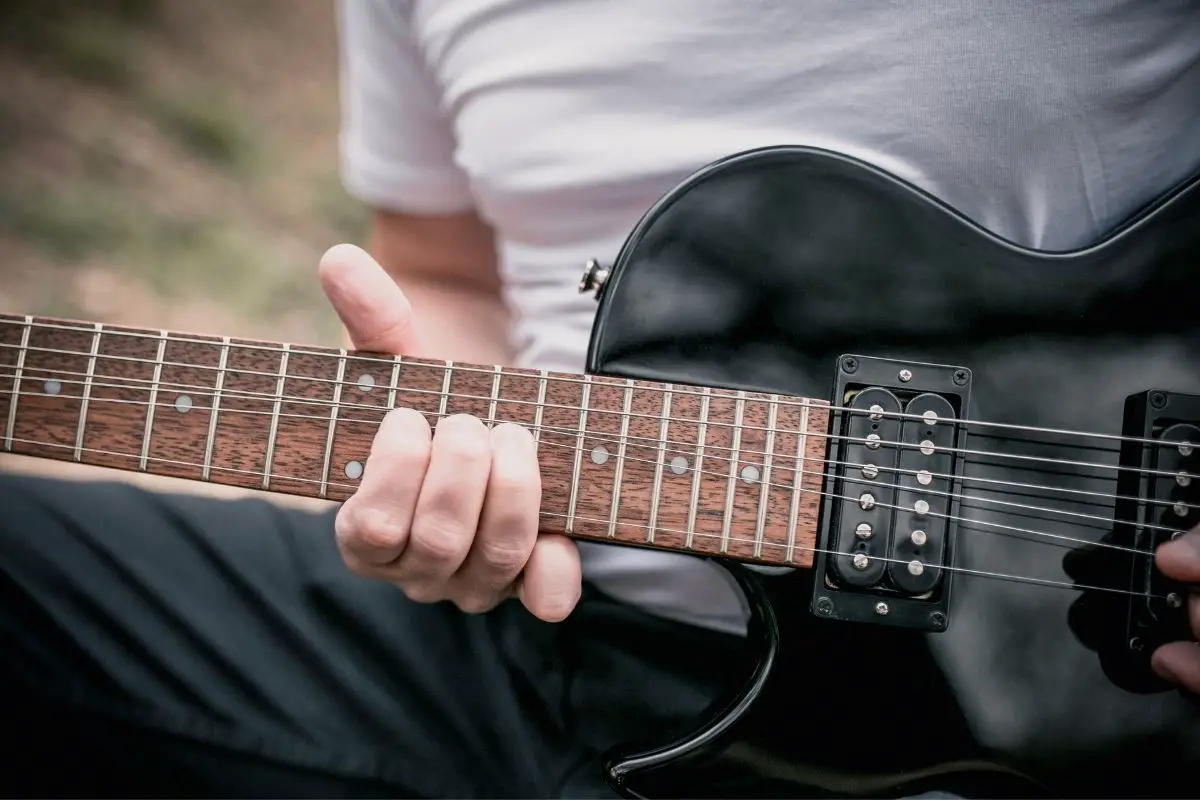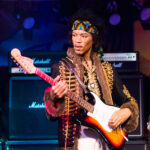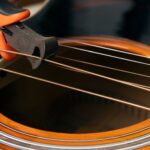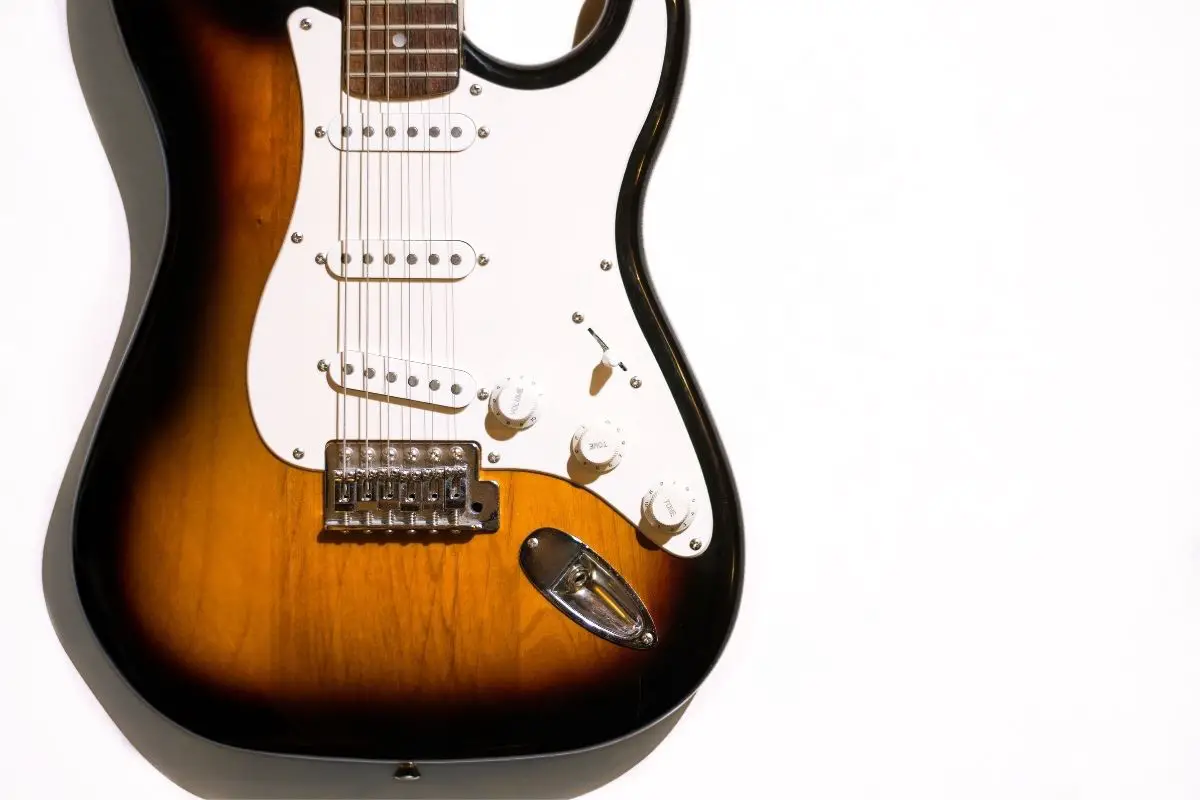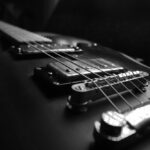Jimi Hendrix is regarded as one of the most influential guitarists in the history of rock music. A significant contributor to his legendary sound was the choice of guitar pickups he used throughout his career.
Although it’s challenging to pinpoint the exact type and specification of pickups Hendrix used, some key aspects can be identified through the examination of his guitars and insights from those who worked closely with him.
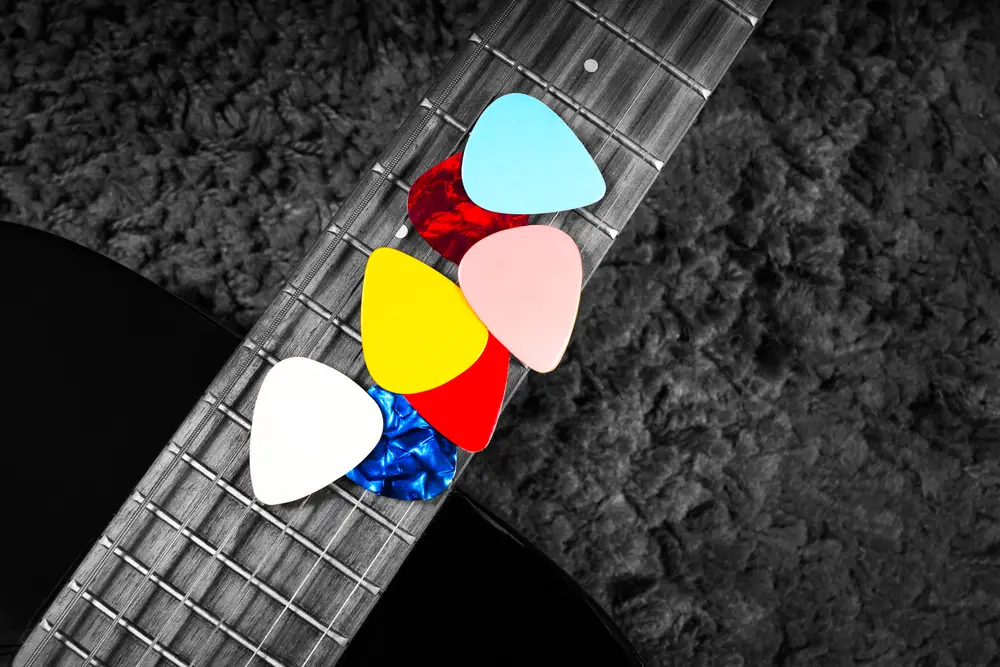
Hendrix primarily played Fender Stratocasters and had a unique approach to their setup. As a left-handed player, he played right-handed guitars upside down, which affected the angle of the pickups and contributed to his distinctive tone.
His use of single-coil pickups, such as the American Vintage ’65 pickups found in the Fender Signature Jimi Hendrix Stratocaster, played a crucial role in achieving the raw and expressive sound he is known for.
Key Takeaways on What Pickups Did Jimi Hendrix Use?
- Jimi Hendrix primarily used single-coil pickups in Fender Stratocasters
- Playing right-handed guitars upside down contributed to his unique tone
- Hendrix’s choice of pickups played a crucial role in his signature sound
You also shouldn’t miss these other related posts:
- What Amps Did Jimi Hendrix Use?
- What Type of Guitar Did Jimi Hendrix Play?
- What Strings Did Jimi Hendrix Use?
Jimi Hendrix’s Signature Sound
Jimi Hendrix is often regarded as one of the greatest guitarists of all time, with a unique sound and playing style deeply rooted in blues. His tone was the result of a combination of factors, from the way he played the guitar to the specific gear he used.
His primary instrument was the Fender Stratocaster, which he famously played upside-down as a left-handed guitarist. In the Fender Signature Jimi Hendrix Stratocaster, the pickups are American Vintage ’65 pickups with a reverse-slant single-coil bridge pickup.
This design choice aimed to replicate Jimi’s flipped guitar setup and the influence it had on the pickup angles, which played a crucial role in shaping his sound.
Hendrix’s tone was not only influenced by his choice of guitar but also by the amps and effects he employed. One of the staple pieces of gear he utilized was the Marshall amplifier, which greatly contributed to his unique, overdriven sound.
While there has been debate surrounding whether Jimi Hendrix used rewound or stock pickups, there is no clear answer. However, it is evident that his sound was not solely reliant on the pickups, as his playing style, choice of amps, and various effects also had a significant impact.
Some of the effects that Jimi consistently used include the mysterious red fuzz face distortion with white knobs and the Vox wah-wah pedal, both of which can be prominently heard in well-known songs like “Purple Haze” and “Voodoo Child (Slight Return)”.
These pedals, in conjunction with his guitar and amplifier choices, allowed Hendrix to create a sound that was distinct and innovative.
Jimi Hendrix’s signature sound was a result of several factors – his playing style, guitar choice, pickup configurations, amps, and various effects. His ability to seamlessly blend these elements allowed him to push boundaries and establish his place in music history as a true innovator and blues legend.
Jimi Hendrix’s Stratocasters
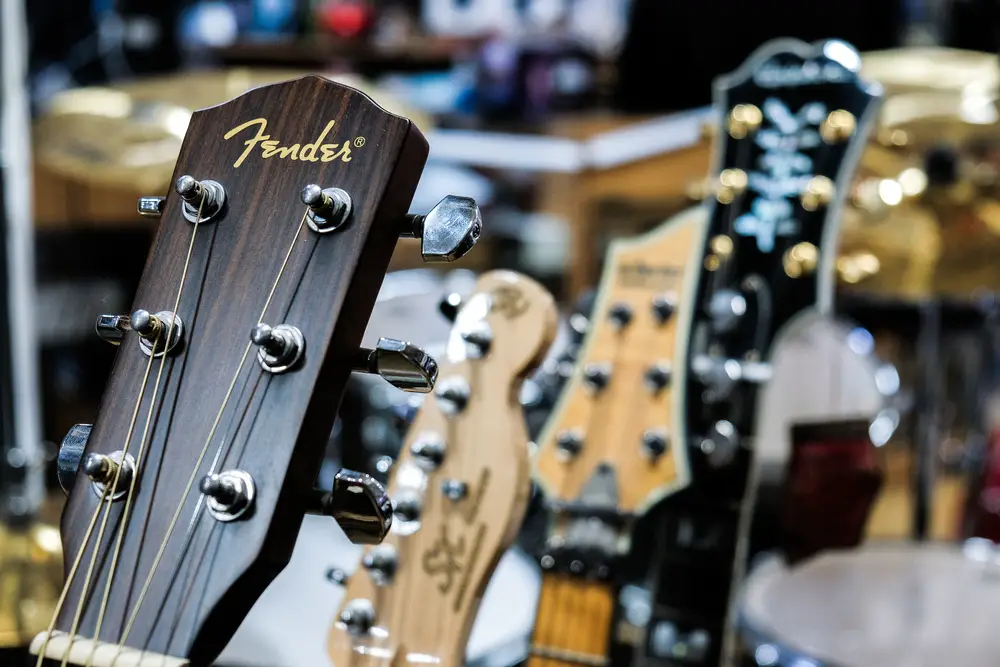
Jimi Hendrix was well-known for his use of Fender Stratocasters, particularly the iconic white Stratocaster he played at Woodstock. Hendrix favored Fender guitars for their versatile tones, which helped define his legendary sound. His preference for left-handed guitars, where he would often play a right-handed guitar upside-down, made his playing style unique and instantly recognizable.
One of the critical aspects of Hendrix’s guitar setup was the selection of pickups. In the Fender Signature Jimi Hendrix Stratocaster, the American Vintage ’65 pickups were used, along with a reverse-slant single-coil bridge pickup. This unique arrangement was intended to replicate Jimi’s flipped guitar setup and mimic the effect it had on the pickup angles.
Hendrix was known to utilize all three single coil pickups (SSS configuration) on his Stratocasters, often experimenting with the in-between positions of the three-way selector to achieve different tones. He appreciated the fullness of the neck pickup’s sound, which contributed to his rich and powerful guitar melodies.
Several Stratocasters were closely associated with Jimi Hendrix throughout his career, including an Olympic White 1968 Fender Stratocaster he used during his famous performance at Woodstock. This particular model featured a rosewood fretboard and custom-wound pickups, which contributed to Hendrix’s unique sound.
In addition to that iconic instrument, Jimi Hendrix also played a 1963 Fender Stratocaster early in his career. This early Strat was extensively used during his days with Little Richard and during sessions at Juggy Sound studios in New York.
To sum up, Jimi Hendrix’s distinctive playing style and sound were heavily influenced by the various Fender Stratocasters he used, combined with custom-wound pickups and his innovative approach to playing a left-handed guitar.
The Signature Jimi Hendrix Stratocaster model’s unique features pay homage to this legend and aim to replicate the sound and feel held so dearly by Hendrix fans and guitar enthusiasts alike.
Pickups Used By Jimi Hendrix
Jimi Hendrix, a legendary guitarist, was known for his innovative use of pickups to achieve his unique sound. His main guitar was a Fender Stratocaster, and the pickups he used were predominantly from Fender.
In the Fender Signature Jimi Hendrix Stratocaster, the pickups are American Vintage ’65 pickups with a reverse-slant single-coil bridge pickup. This reverse slant was intended to replicate Jimi’s flipped guitar setup and the effect it had on the pickup angles.
While working with Roger Mayer, a sound innovator and guitar effects specialist, Jimi experimented with other pickups from various manufacturers, such as the Seymour Duncan. Mayer helped Hendrix achieve his dynamic sound through customizing pickups based on Hendrix’s preferences for fuzz, output, and overall sonic qualities.
The pickups that Jimi used were critical in establishing his sound profile. For instance, the reverse-slant bridge pickup allowed him to accentuate the treble strings while maintaining a clear bass response. This setup, along with 42-gauge formvar wiring, ensured that Hendrix had a wide tonal range at his disposal.
Pickup position also played a significant role in shaping Hendrix’s sound. He often favored the middle or neck pickup positions, which offered distinctive tonal qualities and contributed to his groundbreaking playing style.
It is worth noting that he used a mix of both stock Fender pickups and aftermarket humbuckers, which provided him with additional versatility in creating his desired sound.
Jimi Hendrix’s unique pickup configuration and sonic character have continued to influence guitar players and manufacturers alike. The Fender Custom Shop now offers a range of pickups designed to replicate the iconic tones of Hendrix.
These modern-day pickups pay homage to the incredible range of tones that Jimi was able to achieve using his Fender Stratocaster. The pickups used by Jimi Hendrix, such as the American Vintage ’65 pickups and the reverse slant bridge pickup, played a significant role in shaping his innovative sound.
Additionally, collaborations with specialists like Roger Mayer allowed Jimi to further customize his pickups and experiment with different tones and sonic qualities. His legacy continues to inspire guitarists and the industry as a whole to push the boundaries of what is possible with guitar pickups and sound engineering.
Guitar Playing Techniques
Jimi Hendrix was known for his exceptional guitar playing skills and innovation in techniques. One of the key components that contributed to his distinctive sound was the type of pickups he used.
Hendrix initially used Fender standard pickups in his Stratocasters, with modifications made by Roger Mayer. Later, Seymour Duncan provided him with custom-wound pickups for his 1968 white Fender Stratocaster.
When it comes to his playing style, Hendrix employed a variety of techniques that set him apart from other guitarists. These included his unique use of volume control, treble, and distortion to create a rich and warm sound. He also made use of a combination of both bridge and single-coil pickups for a versatile guitar tone.
In addition to his choice of pickups, Hendrix’s use of guitar picks played an important role in shaping his iconic sound. He often utilized a red/black pick with a specific thickness, providing him with greater control over his playing. This, coupled with his mastery of various picking techniques, contributed to his unforgettable playing style.
Hendrix’s guitar tech expertise led him to experiment with different string gauges and even the Octavia, a custom effect pedal that generated an octave higher than the original note played. Using the Octavia, he created a wide range of tones that showcased both his creativity and technical prowess.
Jimi’s influence on electric guitar-playing techniques continues to be felt today, and many of his methods can be explored by aspiring guitarists on platforms such as Amazon, where a plethora of instructional materials are available.
Whether it’s learning his signature riffs or understanding the importance of pickup choice, guitarists inspired by Hendrix have ample resources at their disposal.
Amplifiers and Effect Pedals
Jimi Hendrix was known for his innovative guitar sound, which was achieved using a combination of different amplifiers and effect pedals. One of his main amps was the Marshall JTM45/100, which provided a powerful and warm tone. He also used a variety of other amplifiers throughout his career, including Bassmans, Sunn 100s, and the 100-watt Super Lead.
When it comes to pedals, Hendrix was a pioneer in using effect units to shape his guitar tone. His signature fuzz sound was achieved by using the Dallas Arbiter Fuzz Face, a germanium transistor-driven fuzz box that added warmth and low-end heaviness to his sound. The Fuzz Face became an essential part of his tone, particularly in live performances.
Another key component of his sound was the reverse-slant single-coil bridge pickup, which was found on his trademark Jazzmaster. This particular pickup contributed to the unique tonality of his playing, adding depth and richness to his chords and lead lines. Additionally, he often used the middle or neck position of the pickup selector, further shaping his distinct sound.
Hendrix was also known for experimenting with bass strings, using them to create a heavier, more powerful tone. This approach enabled him to play with the lower frequencies of his guitar, adding a new dimension to his already iconic sound.
In live performances, such as at Woodstock, Hendrix employed an assortment of effects to enhance his showmanship and create memorable experiences for the audience.
Among these were the Maestro Fuzz-Tone, Octavia (an octave fuzz), and the Univibe, which added a swirling, psychedelic quality to his playing. The song “Izabella” is a prime example of how he utilized these effects to create a unique sonic landscape.
Jimi Hendrix’s innovative approach to amplifiers and effect pedals helped shape the future of rock and roll, inspiring countless musicians to explore new possibilities with their sound.
His use of the Marshall JTM45/100, Fuzz Face, and reverse-slant single-coil bridge pickup, combined with his experimentation with bass strings and various effects, cemented his status as a guitar tone pioneer.
Other Notable Guitars
In addition to the pickups, Jimi Hendrix played with a variety of guitars throughout his career. One of these notable instruments was the Fender Jazzmaster, which was popular among surf music players and was a significant departure from the more common Stratocasters that he used for the majority of his work.
Another unique choice was the Gibson Flying V, a model famous for its distinctive shape. Hendrix purchased a cherry red Gibson Flying V in 1967, and later acquired a black one in the spring of 1970. These guitars were used for softer tunes, such as “Red House” and “Hey Joe”.
Jimi also experimented with the Gibson SG Custom and the Epiphone Wilshire, both known for their unique designs, showcasing his versatile playing style. Additionally, during his time with the Isley Brothers, Hendrix played a Supro Thunderbolt guitar, which was later stolen. This event led to the acquisition of his second electric guitar, a 1960s Danelectro Bronze Standard.
Hendrix’s guitar tech played a significant role in his quest for the perfect tone, as he often customized his guitars in various ways. For amplification, he relied heavily on Marshall amps, such as the Marshall Super 100JH, a variant of the classic Marshall Super Lead used by numerous guitarists.
However, he also made use of Fender Bassmans and Supro Thunderbolts, creating combinations that brought out interesting aspects of his sound.
Jimi Hendrix’s choice of guitars and gear was diverse and unique, showcasing his innovative and groundbreaking playing style. From the classic Stratocasters to less conventional models like the Gibson Flying V and Jazzmaster, his musical prowess and inventiveness live on and continue to inspire guitarists today.
Frequently Asked Questions
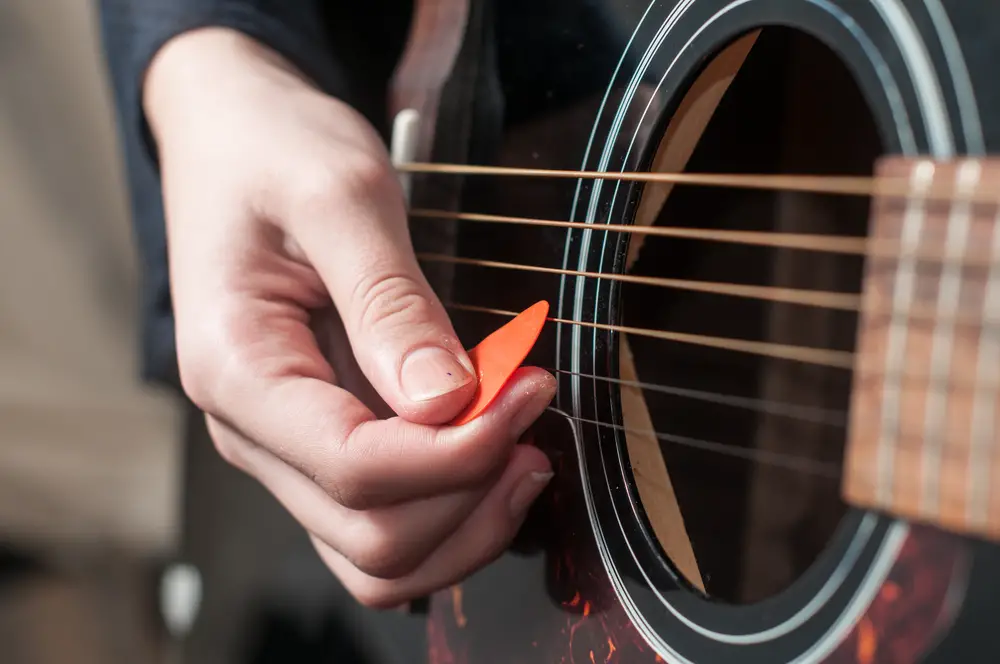
Which pickup positions did Hendrix prefer?
Jimi Hendrix was known for experimenting with different sounds and tones. In his short career, he was seen using various pickup positions on his Stratocaster.
There isn’t a definitive answer regarding his favorite pickup position, as he changed and adjusted them depending on the desired sound for each particular song he played.
What is the Seymour Duncan Jimi Hendrix pickup set?
The Seymour Duncan Jimi Hendrix pickup set is a collection of pickups designed to recreate the unique tones and sounds of Jimi Hendrix’s guitars.
These pickups are modeled after the original pickups used by Hendrix and are intended to provide players with a similar sound experience to what Hendrix achieved in his time. They can be seen as a tribute to his influence on the world of guitar playing and music in general.
How did pickup height affect Hendrix’s tone?
Pickup height is known to have a significant impact on the tone and output of a guitar. Hendrix was known for constantly tweaking his guitars to achieve the perfect sound.
Adjusting the pickups’ height would have allowed him to fine-tune his tone, achieving the desired level of clarity, warmth, and sustain in his recordings and live performances.
What type of guitar pickups did Hendrix use on his Stratocaster?
Jimi Hendrix used a variety of pickups on his Stratocaster, including single-coils and humbuckers, to create his unique sound. His choice of pickups often depended on the sound he wanted to produce for specific songs or performances.
Were there any specific reasons for Hendrix’s preference for Strat pickups?
One of the reasons Hendrix may have preferred Strat pickups was their versatility in producing a wide range of tones.
Additionally, single-coil pickups, commonly found on Stratocaster guitars, were known for their bright, piercing sound, which perfectly complemented Hendrix’s playing style, full of fuzz, distortion, and overdrive.
How do Hendrix’s pickups compare to Stevie Ray Vaughan’s?
Both Jimi Hendrix and Stevie Ray Vaughan are legendary guitarists with their own unique styles and tones. While they both have played Stratocasters and used similar types of pickups, their individual playing techniques, gear setups, and preferences contributed to their distinct sounds.
Comparing their pickups would not provide a complete picture of how their tones differed, as other factors such as the string gauge, amplifier settings, and playing techniques also played crucial roles in shaping their signature sounds.

My name is Howard Matthews and I have been playing the guitar since I was knee-high. My parents like to joke that I was pulling the strings even before I was born. In fact, one of my earliest memories is sitting on the couch with my dad’s guitar, wreaking havoc on the chords.
Now, 40 years later, I can attest that I play them much better than I did back then. I have followed in the footsteps of both my parents – much to their delight – and have been the main guitarist in my band for the best part of three decades.
Music has always been my passion, and until recently my life has been so consumed with it that I haven’t had a moment to have a breath (and I wouldn’t have it any other way)!



